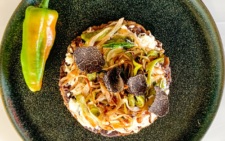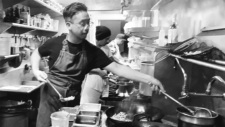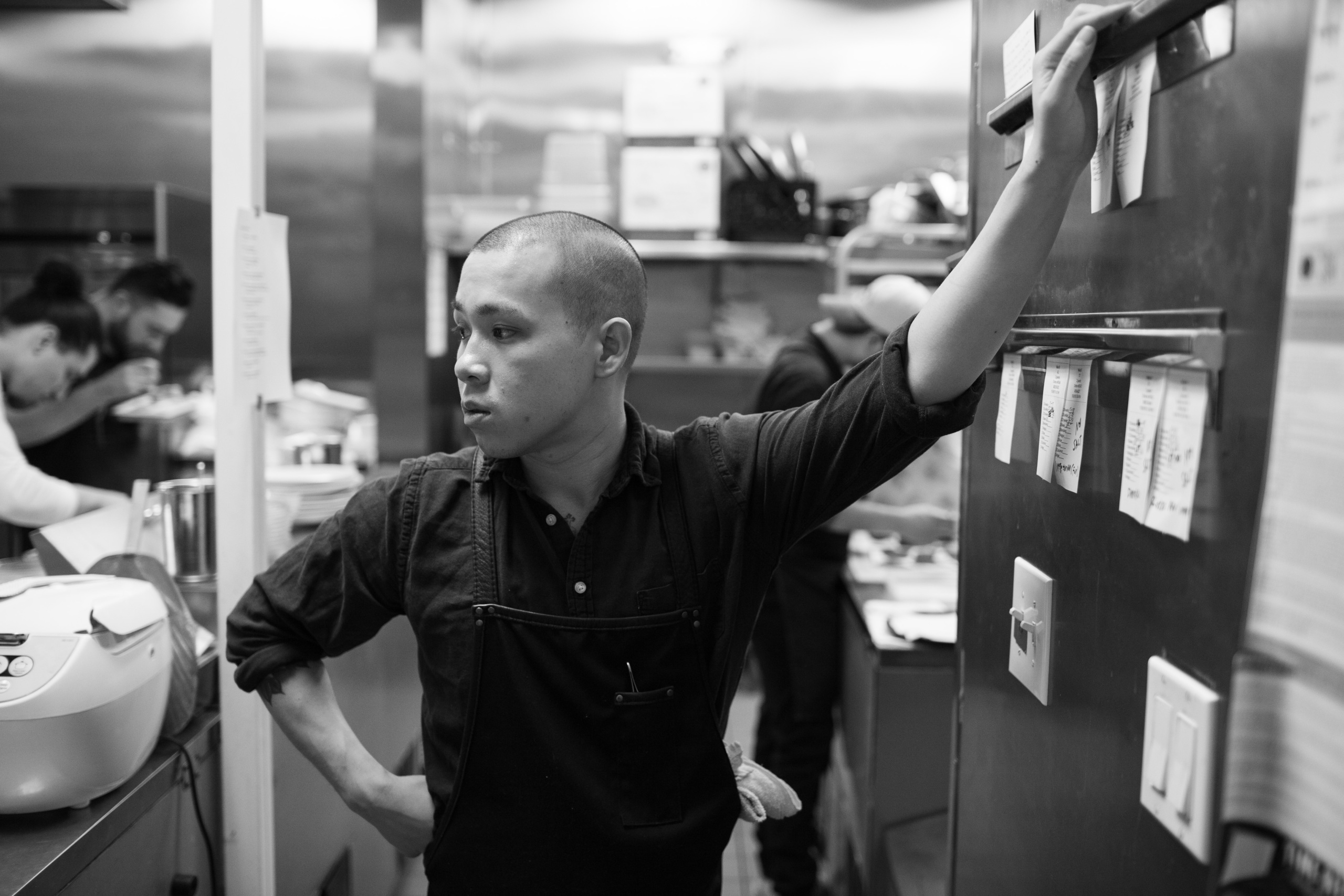
Jon Yao’s Taiwan-Inspired Cooking at Kato, As Seen Through Five Dishes
When Kato opened in West Los Angeles in 2016, Taiwanese food had just begun to creep westward from the San Gabriel Valley. The vision chef Jon Yao had for the cuisine, however, was already light years ahead.
Before Kato, Yao learned as much about food and cooking from his grandmother and Taiwan-born mother as he did working in professional kitchens like Alma, Ari Taymor’s tasting menu spot in downtown L.A., or at San Francisco’s Coi. He started honing his own cooking style while creating tasting menus out of his house, where he combined the flavors and techniques of Taiwan with a Californian sensibility.
So when his family took over a small restaurant in a West Los Angeles strip mall, the plan was for him to get the place set up for a simple daytime cafe, and then travel to Copenhagen for an internship at Relæ, one of the top restaurants in a city that largely defined fine dining in the 2010s. But series of circumstances — including the lease on the restaurant space, which would otherwise sit empty — kept him home. And the barely 25-year-old turned that little storefront into a spot that soon would garner him a Michelin star.
The circumstances, and his age, are only surprising when you’re sitting on the patio today, enjoying an ethereal seafood-centric tasting menu. Otherwise, you get the sense that Yao has been at this for decades, not just a few years.
“We’re always tweaking and going back and trying to make [the menu] better,” says Yao. Whether that means finding a different way to work with tapioca as a canapé or incorporating one more part of the fish into its course, the evolution of each dish tells a very personal story.
He didn’t stop testing and reinventing during the pandemic, even when he was relegated to takeout-only menus. Looking back is looking forward for Yao, and watching his ebb and flow with time, seasons, and his travels have created a vision that garnered Kato high praise and recognition from local and national publications.
When Yao talks about how some of his brightest creations came to be, it’s like a snapshot into everything he and his restaurant are about. Here he describes five of his favorite dishes from the current menu — Kato on a plate, in his own words.
Kato is open for outdoor service, Tuesday through Saturday, dine-in only. Reservations are mandatory; make them here.
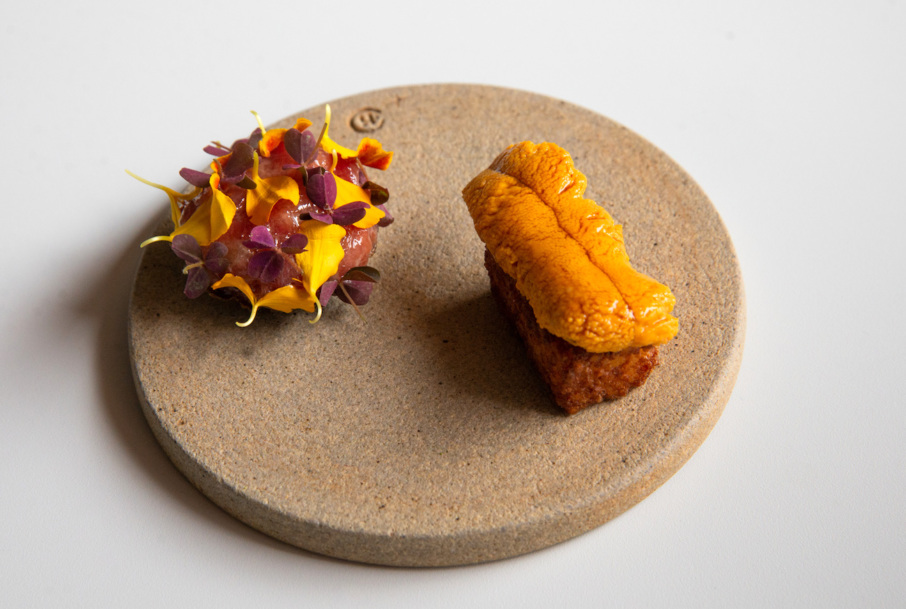
Tapioca with Uni
“We were trying to do a boba-esque dessert. So we gave ourselves two things to work with: Milk and tapioca pearl. The big ones are too temperamental; they’re very temperature sensitive and obviously a very unwieldy size. So we tried the small ones. We were trying to do all these sorts of things with tapioca to make a dessert, but none of it felt right. But then we fried it, and it came out like a tapioca chicharron. It kind of felt like that Brazilian snack [pão de queijo], since it had a little cheese as a binder. Then we went extra hard with brown butter, which was once a sauce for an uni dish. We combined the two because the flavors were similar.”

Caviar with Geoduck
“For me, it’s so fun to eat at tasting-menu restaurants. I forgot where we were eating, but there was a dish that had so much butter. But it didn’t feel like you’re consuming a lot of butter. I got home and wanted to do something like that. So we inoculate koji, make a paste out it, and then blend it with mussel stock. And then we add brown butter. We were trying to think of flavors that went well with this sauce, but didn’t really know what to do with it. I kept eating it, and it tasted kind of like chowder, in an abstract way, with geoduck. We use celtuce because it kind of tastes like lettuce and butter — a great combination here, in my opinion.
“Then I thought, this amount of butter needs caviar. So we do a 10-gram portion of Kaluga hybrid. It’s my favorite caviar so far. We’ve tested so many different caviars from different purveyors, but this is a standout because how they age it, it sort of tastes like country ham or prosciutto. Close your eyes, and it tastes like cured meat. With a little dollop of smoked onion and cultured cream on the bottom, there’s a little bit of smokey, hammy flavor, but it’s all completely seafood.”
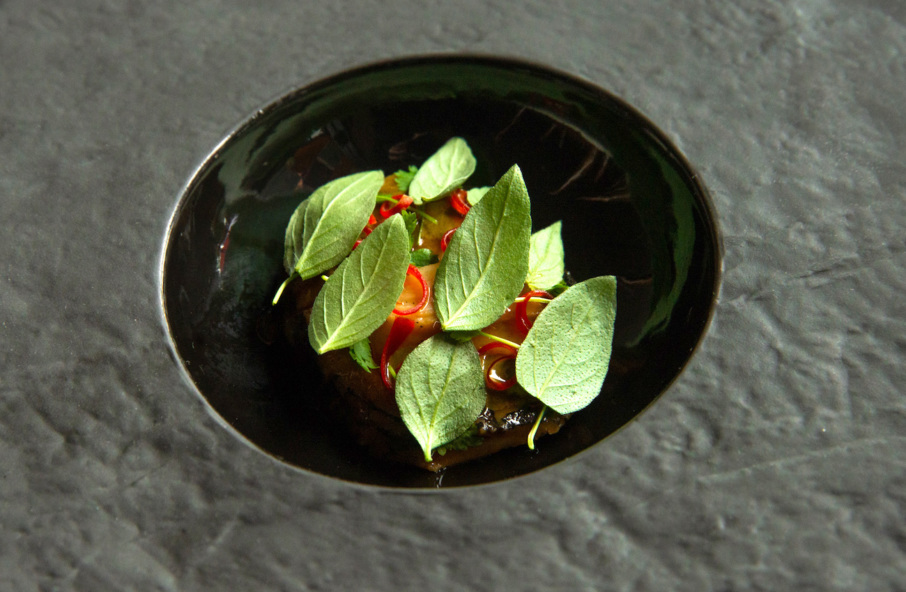
Three Cup Abalone
“Everyone who knows the [Taiwanese staple] three cup chicken will recognize this sauce. My mom used to cook sea sails in that sauce, super hot, and just put them on a plate. [I’d] get a toothpick, go in, and pull out the meat. It’s so good; they’re so small, you cat eat like 100 and not be full. I just loved sucking on the shells and then eating the meat as a kid. So I was trying to think of something that would emulate the two: my mom’s snails and Taiwanese chicken.
“First, the chickens raised in Taiwan are super chewy and more chicken-y than even American chicken. They’re not tender. So we wanted to do something with that chew, but also wanted to use abalone, which we were using in a porridge at the time. That was at a point when we wanted to do more Taiwanese-style dishes. So we took the abalone and steamed it between sheets of kombu, then tossed it in three-cup jam. Because sesame oil is a huge flavor in three cup chicken, we take the abalone liver and blend it with sesame oil to make an emulsion. When you have Japanese abalone, you always find a way to serve the liver and the stock. It’s arguably the best part of it.”
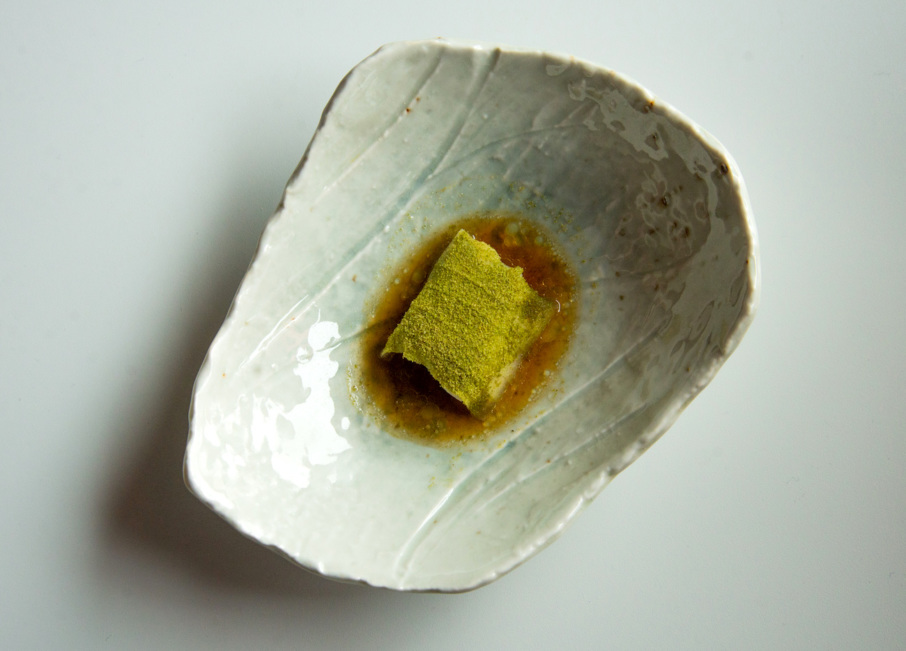
Steamed Turbot
“A lot of chefs have their versions of scaled fish [in a tasting menu], like Daniel Boulud has the potato scaled fish, Matthew Kirkley has the root vegetable one. We wanted to do it so it had scales, but in a more abstract way. My version is based on my the flavors of my mom’s recipe. This dish is like the ‘ratatouille moment’ for a lot of Chinese or Taiwanese people.
“We use the whole fish, first steaming the turbot stuffed with a ginger-scallion relish inside. We blanche the bones and take off all the meat, so you have these really clean racks. Then we put those bones in hot water with ginger, and blend in a few different types of rice wine, add a few different types of soy, and then ginger and scallions, and make it into like a Japanese barbecue relish. On top it’s dusted with green scallion powder and this konbu salt that we make. The broth is from the fish, with leftover oil made from frying the relish. It’s all there, start to finish, but just in different form.”
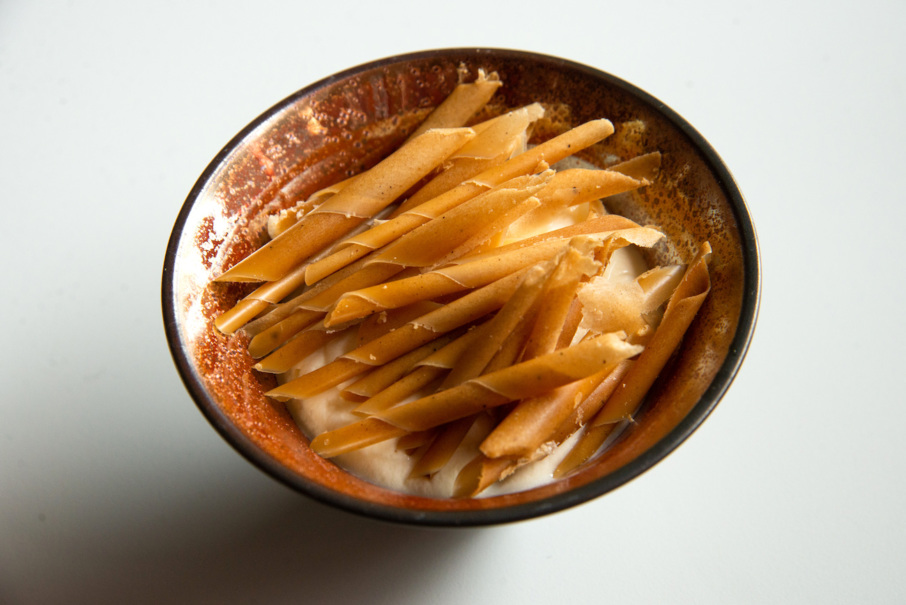
Boniato Tapioca
“We wanted to do a tapioca but differently, so we use boniato yams. Boniato yams are like those Japanese-Korean-Chinese grocery store yams, purple on the outside, but white on the inside. You just stick them in the oven, but even if you boil them, steam them and eat them they taste like they’ve been roasted. The skins are still flavorful. My parents share one every other day because they’re good for your health. I grew up having that taste a lot. So we made giant balls of those with the boniato yams.
“In Taiwan, they’ll soak boba in Taiwanese red sugar, which is kind of hard for us to find here. So we’ll use muscovado sugar to make a syrup, and soak the cooked boniato balls in that syrup so they absorb everything. I don’t know if it’s just San Gabriel, but I feel that milk tea with a cream-cheese cap is huge right now. The salted cheese caps. So we make like a farmer’s cheese, like a freschetta. And then we’ll blend it with a huge amount of salt and sugar so it kind of tastes like cream cheese frosting.
“Then we make these butter cookies with brown butter and freeze it into blocks, then shave it. So it kind of feels like you’re eating every boba dish combined. It’s cream cheese milk tea, but also shaved ice, but also tapioca. But that dish started out because we wanted to make a gluten-free potato gnocchi.”
Esther Tseng is a food, drinks and culture writer. She has contributed to The Los Angeles Times, Eater, Food & Wine, Civil Eats and more. Follow her on Twitter and Instagram. Follow Resy, too.

